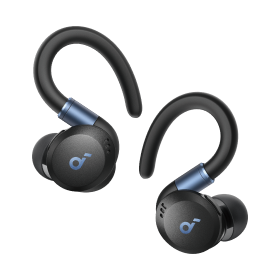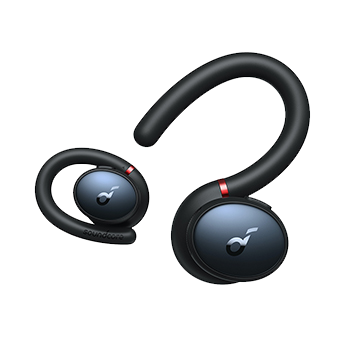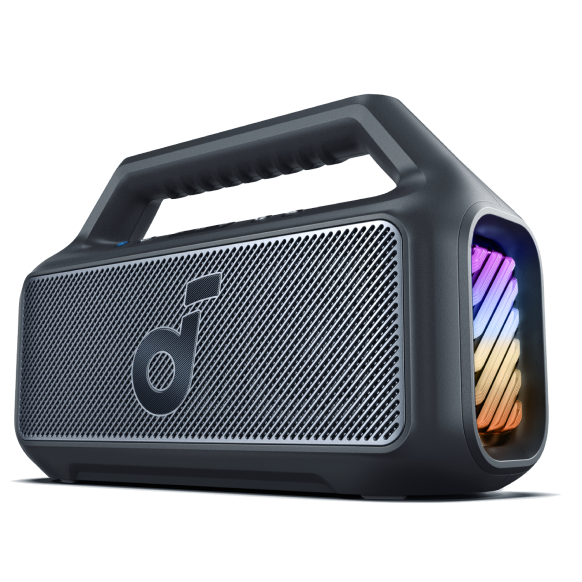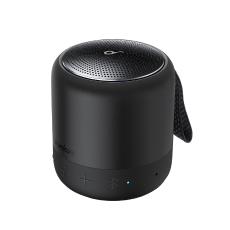Are Open-Ear Headphones Better and Safer for Your Ears?
Open-ear headphones soared to stardom in 2025, and the buzz continues to grow. With the increasing occurrences of ear fatigue, hearing damage, and temporary comfort, people are progressively wondering: Are open-ear headphones better for their ears or, more importantly, are open-ear headphones safer for their ears in the long run?
In this guide, we’ll break down how open-ear headphones work, examine their health and safety benefits, compare them to in-ear alternatives, and introduce two of the best open-ear headphone options available from soundcore this year. Whether you’re a fitness enthusiast, office worker, or just someone who values both sound and safety, this guide is for you.
Why We’re Talking About Open-Ear Headphones in 2025
Along with the continuation of the remote working style, exercising in fresh air, and listening to audio content for a prolonged period, headphone choice has now become very important. Orthodox earbuds and over-the-ear ones have proved their worth in sound isolation but suffer from drawbacks such as ear fatigue and a lack of situational awareness.
With this changing user preference, open-ear technology has taken centre stage. But are open-ear headphones safer in the long run than traditional forms? To address that question, first, we need to define what makes them different.
What Are Open-Ear Headphones?
Before we dive into their benefits, let us understand what open-ear headphones are. Unlike in-ear or over-ear variants that create a seal over the ear canal, open-ear headphones sit just outside or around the ears. It creates a method of transmission via air conduction or bone conduction without having their ears sealed off from the world.
This design allows users to hear ambient sounds while enjoying their audio content—an innovation that’s proving useful in everything from outdoor workouts to open-office settings. With that foundation, we can now better evaluate the key question: Are open-ear headphones better for your ears?
Are Open-Ear Headphones Better for Your Ears?
Now that you know the design philosophy behind it, it is time to find out what it means to your ear health. One of the most clichAutorically said statements is that in-ear headphones cause a lot of physical discomfort for extended listening. This is where open-ear designs excel.
More Comfortable and Hygienic
Contrary to traditional earbuds, the open-ear headphones do not insert inside the ear canal, resulting in little to no pressure, irritation, or wax build-up. Open-ear headphones, such as soundcore AeroFit 2, are quite liberating for people with sensitive skin, eczema, or just general discomfort from regular in-ear buds.
Keep the Volume Down
The next big thing to consider is sound exposure. Old-fashioned earbuds would place sound directly within the ear canal, and users would crank up the volume to reach their ears. Open-air headphones, in contrast, half respect natural sound and half protect against listeners increasing volume to dangerous levels. So, if you are wondering, are open-back headphones better for your ears? That is a prime reason for that answer being yes.
Are Open-Ear Headphones Safer?
Moving from comfort to safety, the users are increasingly questioning, "Are open ear headphones safer than in-ear ones?"
Enhanced Situational Awareness
Since open-ear headphones keep your ears open, you remain aware of your surrounding environment. This is crucial for the outdoor runner, cyclist, commuter, or even a parent at home. Instead of full isolation, you can listen to traffic, alarms, conversations, or other safety cues while also listening to an interesting audio track.
Hearing Protection Benefits
They remove that plugging-in-down sensation; with this, one does not need to rely on high volume with open-ear headphones and can protect their hearing over the long term. Safe-volume-listening is what health organisations have strongly recommended for our hearing, and open-ear design supports such an option.
To conclude, if we have been debating whether open ear headphones are safer, the ambient awareness and reduction in the sound pressure level make them the best choice.
Open-Ear vs In-Ear Headphones: What’s the Difference?
In order to truly understand the value of open-ear headphones, it is worth drawing a comparison between the two: one common type in use today is in-ear models. Are open-ear headphones better for your ears than in-ear headphones? Check the comparison below:
Sound Delivery and Isolation
One type of earbuds simply sit in the ear canal and are supposed to isolate far-away sounds. This time can become very useful when one is in a loud environment, but usually compromises the very essential comfort or situational awareness. An open-ear headphone uses an alternate technology to send the sound through into the user's ears without blocking the outside world.
Comfort and Long-Term Use
They are uncomfortable to wear for long periods of time without open-ear earbuds. According to the manufacturer, these headphones are lightweight and breathable, eliminating that pressure. For example, soundcore AeroFit 2 provides a secure fit without pressure.
Hygiene and Maintenance
The in-ear model allows moisture and wax to enter your ears. The open ear design is more hygienic in comparison, especially for fitness day use.
Putting all of these into consideration, one begins to see why many users think that the open ear types are healthier and practical.
They provide a balance between audio performance, safety, and comfort, especially for modern, on-the-go lifestyles.
soundcore Recommendations: Best Open-Ear Headphones in 2025
If you’re ready to make the switch, soundcore offers some of the most innovative and comfortable open-ear headphones available in 2025. Let’s take a closer look at their top picks:
AeroClip Open-Ear Earbuds

Designed for users who wear glasses, AeroClip attaches discreetly to the arms of your frames. It offers:
- Open-ear air-conduction audio for immersive sound
- Lightweight build at only 5.9g (0.19oz)
- Up to 8 hours of continuous playtime, up to 32 hours with the charging case
- 4 Mics with AI for crystal-clear communication
AeroClip is perfect for commuters and multitaskers who need reliable sound without losing environmental awareness.
AeroFit 2 Open-Ear Earbuds

Built for movement, AeroFit 2 is a durable, flexible, and sweat-resistant option ideal for active users. Its features include:
- IP55 water resistance and SweatGuard™ technology
- 20 mm × 11.5 mm racetrack drivers for premium audio clarity
- Up to 10 hours of music on a single charge, extendable to 42 hours with the case.
- Flexible ear hooks for a secure and comfortable fit during workouts
Whether you're hitting the gym or the pavement, AeroFit 2 ensures you stay in tune with your surroundings — and your playlist.
Who Should Choose Open-Ear Headphones?
Are open-back headphones better for your ears and your lifestyle? They are especially useful for:
- Athletes and runners need to stay alert about their environment
- Commuters navigating busy streets and public transport
- Parents or remote-working people interested in background activity
- An individual with sensitive ears or experiencing discomfort with in-ear types
- Anyone prioritising hearing health and long-term comfort
If you find yourself relating to any of the above-mentioned options, open-ear headphones would bring about a difference in both safety and joy.
Final Thoughts: Are Open-Ear Headphones Right for You?
So, are open-ear headphones better and safer for your hearing? At the beginning of 2025, more people than ever are saying "yes." They present that rarer sort of unheard-of comfort, cleanliness, and ambience awareness that barely any conventional store-bought pair can.
Whether you lean toward the glasses-friendly AeroClip or actively gym-sold AeroFit 2, soundcore has options that represent the personal audio of tomorrow. Open-ear headphones are a smart, hopeful pick if you want something that respects your ears almost as much as it respects sound quality.














































